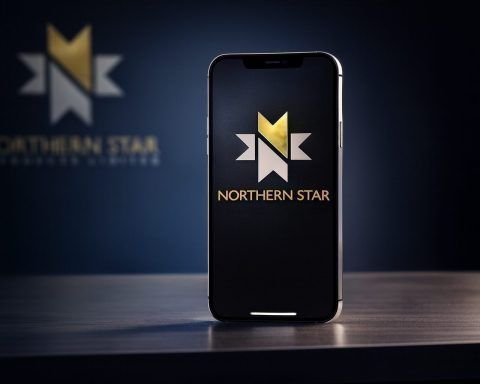- In 2018, LinkSure announced plans for a 272-satellite constellation to provide free global Wi-Fi by 2026.
- Quika offered a mostly free satellite broadband in parts of the Middle East and Africa, delivering about 3 Mbps down/1 Mbps up, but installation and a hardware deposit were still required.
- There is currently no genuinely free satellite internet for consumers; all major providers require paid subscriptions and specialized equipment because satellites and ground infrastructure cost millions.
- Amazon’s Project Kuiper aims for affordable service and is expected to start in late 2025.
- In emergencies, SpaceX Starlink has provided free service and terminals in Ukraine and after major hurricanes and wildfires.
- HughesNet Lite is advertised at $39.99/month for up to 25 Mbps with 10–15 GB of high-speed data, after which speeds drop to about 1–3 Mbps, with occasional $0 installation promos.
- Viasat’s basic plans typically start around $50–$70 per month, offering 40–60 GB of priority data, with some regions seeing plans up to 300 GB at higher prices.
- Starlink Residential costs about $120/month for 50–200 Mbps, Starlink Lite about $80/month with similar speeds (potential deprioritization), and the hardware is about $350 (promotions as low as $199) with no long-term contract and a 30-day trial.
- In July 2025, T-Mobile launched T-Satellite, a satellite-texting add-on via SpaceX Starlink, priced at $10/month (rising to $15 later) and usable by non-T-Mobile customers, with beta uptake near 2 million users.
- Subsidies such as the FCC’s Lifeline and the Affordable Connectivity Program can cover satellite internet costs in some regions.
The Idea of Free Satellite Internet
The concept of free internet beamed from satellites is undeniably alluring. Imagine getting online from anywhere on Earth without paying a monthly bill – a potential game-changer for remote communities and travelers. Over the years, there have even been ambitious claims of making this a reality. For instance, in 2018 a Chinese company LinkSure announced plans for a 272-satellite constellation to provide free global Wi-Fi by 2026 Abc Abc. Likewise, start-up Quika touted “the world’s first entirely free high-speed satellite internet” for developing countries, aiming to bridge the digital divide (with users only paying setup costs) Americantv. These projects generated excitement – one Chinese social media user gleefully imagined “going out without asking for a Wi-Fi password” if LinkSure succeeded Abc. Clearly, the demand for no-cost connectivity from space is high. But how close are we to that ideal?
Why True Free Satellite Internet Doesn’t Exist (Yet)
Despite the dreams, truly free satellite internet for the general public is not available as of today. Industry experts point out that operating a satellite network is enormously expensive, and those costs have to be recouped. As one satellite broadband provider bluntly states: “No, there is no genuine free satellite internet service for consumers (as of now)… running satellites and ground infrastructure is very costly, so service isn’t something that can be given out for free.” ts2.tech Every major provider requires a paid subscription and specialized equipment, because launching and maintaining satellites costs millions of dollars ts2.tech ts2.tech.
Rajeev Badyal, head of Amazon’s forthcoming Project Kuiper satellite constellation, explained that the fundamental barrier to ubiquitous internet is cost: “Why aren’t rural areas connected? The answer is very simple… If it were cost-effective, it would have been done by now. But it isn’t.” Pymnts In other words, someone has to foot the bill – either the customer or a benefactor – because satellites don’t run on goodwill alone.
Moreover, any offers you might see for “free satellite Wi-Fi” are likely too good to be true. Providers warn that advertisements for free satellite internet are usually scams or misinformation ts2.tech. A gadget on Amazon claiming “Ultra Link Free Satellite Internet” or similar gimmicks will not magically get you online without a paid network behind it. Beware of such devices or services – at best, they’re misrepresented (piggybacking on terrestrial signals or extremely limited functions), and at worst outright frauds, as tech forums have noted. The bottom line: if someone promises completely free satellite broadband, be very skeptical.
Special Cases When Satellite Internet Is Free
While no company offers free satellite internet to everyone, there are limited scenarios where it has been provided at no charge:
- Emergency and Disaster Relief: In crisis situations, satellite operators have waived fees to help. For example, during the war in Ukraine, SpaceX supplied Starlink satellite terminals and service free of charge to areas that lost connectivity ts2.tech. Similarly, after major hurricanes and wildfires, Starlink has temporarily provided free internet to impacted communities and first responders Livenowfox. These lifesaving deployments are sponsored by the company or governments in emergencies, not open-ended free plans for the public.
- Government or NGO Programs: In some cases, governments and nonprofits fund satellite internet for targeted communities. There have been pilot programs where rural schools or clinics get satellite links at no cost to users, underwritten by grants. These are typically localized initiatives to bridge connectivity gaps, rather than an option individuals can sign up for broadly ts2.tech. If you’re struggling with internet costs, it’s worth checking if your region has any broadband subsidy programs that could cover satellite service fees ts2.tech.
- Quika’s Developing Country Service: As mentioned, Quika launched a service in parts of the Middle East and Africa intended to be mostly free. It offers a basic satellite broadband connection (around 3 Mbps down/1 Mbps up) to users in select developing nations Facebook. However, even Quika isn’t totally free – users still have to pay for installation and a hardware deposit Americantv. And the service is limited in where it’s available. This model is more of a philanthropic or subsidized venture to boost connectivity in underserved areas, rather than a sustainable global free ISP for anyone.
- Outernet/Othernet Broadcasts: A unique case is Othernet (formerly Outernet), which provides one-way data broadcasts from satellites that anyone can receive with a small kit. This isn’t full internet access, but it can beam down free content like news, educational materials, and weather updates. Essentially, it’s like a free data library from space. While useful, it’s not an interactive internet connection – you can download provided files/data but not browse the web or send your own data up ts2.tech. It’s a creative approach for spreading information, yet far from a substitute for two-way internet service.
- Smartphone Emergency SOS: Big tech companies have also integrated limited free satellite capabilities in personal devices for safety. Notably, Apple built an Emergency SOS via satellite feature into iPhone 14 and newer models (and Google did similarly with its latest Pixels). This allows a stranded user to message emergency services or share their location via satellite when they have no cell signal, and Apple is offering it free for at least two years ts2.tech. Crucially, this service is only for emergencies – not for casual internet use. You can’t browse or even send a normal text to a friend; it’s restricted to communicating with 911 or equivalent. It’s a fantastic life-saving feature and is free to use if you have the device, but it doesn’t bring us closer to free general-purpose internet access.
In summary, truly free satellite internet is confined to special cases: disaster zones, charitable programs, or highly restricted services. These exceptions prove the rule that the average consumer cannot get online via satellite without some kind of payment or subsidy in place.
Budget-Friendly Satellite Internet Options Today
If completely free satellite internet isn’t in the cards, what are the cheapest ways to get online via satellite? Fortunately, competition has been increasing, and there are a few comparatively affordable options. Here’s a look at the most budget-friendly satellite internet plans available (as of 2025), and how to keep costs as low as possible:
- HughesNet Low-Tier Plans: HughesNet, a long-running satellite ISP, offers some of the lowest entry prices. Plans start around $40–$50 per month for basic service Highspeedinternet. For example, their “Lite” package is advertised at $39.99/month for up to 25 Mbps download speed Highspeedinternet. This is about as cheap as satellite internet gets. However, these budget plans come with strict data limits – typically only 10 GB to 15 GB of high-speed data per month Americantv. After you use that allotment, you won’t be cut off, but your speed is throttled down to around 1–3 Mbps for the rest of the month Americantv. That’s enough for basic email and messaging, but too slow for heavy use. HughesNet’s philosophy is “soft caps”: you get unlimited data technically, but only a small portion at full speed. If you can live with very light data usage (or do big downloads during their off-peak “Bonus Zone” hours when data use is free) it’s a viable low-cost choice. Just be aware of the trade-off: the cheapest plan means a small data bucket. HughesNet also frequently runs promos like $0 installation or rebate gift cards, which can help cut initial costs.
- Viasat Basic Plans: Viasat (formerly Exede) is HughesNet’s main competitor. Its starting prices are a bit higher – often in the $50–$70 per month range for the lowest tiers – but it typically offers more data in return Americantv. For instance, Viasat might give you 40–60 GB of priority data on a baseline plan, versus 10–20 GB with HughesNet. In some areas Viasat even has plans up to 100+ GB or more (they advertise packages with up to 300 GB of “high-speed” data) Americantv, though those premium plans cost much more. If your budget isn’t ultra-tight, you might find a Viasat plan that, say, costs ~$70 but comes with a much more comfortable data allowance than a $50 HughesNet plan. Essentially, Viasat charges a bit more for a bit more data. Both HughesNet and Viasat use geostationary satellites (high above Earth) and have similar speed ranges (10–50 Mbps common on basic plans). Latency is high (~600 ms) on both, since the signals travel 22,000+ miles each way, but for general browsing or video streaming in moderation, they get the job done. When pinching pennies, HughesNet edges out on price, but Viasat might give better value if you need that extra data and can spend a little more.
- SpaceX Starlink (Standard and “Lite”): Starlink is the newer player, using a dense network of low-Earth-orbit satellites. It isn’t cheap in absolute terms, but it has been pushing prices down relative to the performance it offers. As of 2025, Starlink’s standard Residential plan runs about $120 per month for unlimited data, with typical download speeds of 50–200 Mbps (much faster than HughesNet/Viasat) Starlink. That price is steep for many, but Starlink recently introduced a “Residential Lite” plan around $80 per month Starlink. The Lite plan still offers the same speed potential, but after a certain data threshold your usage may be deprioritized (slowed during network congestion) – effectively a soft cap. This makes Starlink more accessible to lighter users or those on a budget who still want higher speeds when the network isn’t busy. Keep in mind Starlink also requires buying the dish hardware upfront (around $350 for the standard kit, though promotions have offered it as low as $199 in some regions) Starlink. There’s no long-term contract, and they even have a 30-day trial refund policy Readme. So, while $80+monthly isn’t exactly “cheap,” in terms of cost-for-performance Starlink can be a good deal – you get cable-like speeds and true unlimited usage on standard plans, which legacy satellite plans can’t match. If you have heavier internet needs in a rural area, paying more up front for Starlink might save money in the long run (since you won’t need to buy expensive data tokens or suffer slowdowns as you would with a cheaper capped plan). And as competition heats up (with Amazon’s Kuiper on the horizon), we may see Starlink’s prices or promotions become even more attractive.
- Regional Providers and New Entrants: Beyond the big three above, there are other satellite options in different parts of the world. In Europe and Africa, companies like YahClick, Konnect, or regional telecom satellite services offer internet – their prices vary, but usually fall in a similar ballpark (tens of dollars for basic tiers with limited data). These haven’t delivered anything free either, but having multiple players sometimes leads to promotional deals. Also noteworthy, Amazon’s Project Kuiper is expected to start service by late 2025, and they are explicitly aiming for affordability. Amazon has designed their satellites and user terminals to be lower-cost, hoping to undercut rivals on price Pymnts. The exact pricing for Kuiper isn’t announced yet, but industry watchers believe it could spur a price war (or at least provide an alternative in areas where satellite internet is currently very expensive). In short, while you’ll have to pay something for satellite internet, the trend is that more options and tech advances are slowly lowering the cost per byte.
Tips to Keep Satellite Costs Down: If you do subscribe to a satellite ISP, there are a few tricks to maximize value. Take advantage of any free installation or equipment discounts by signing a term contract (HughesNet and Viasat often waive setup fees on 24-month agreements ts2.tech). Use off-peak “free data” periods if your plan offers them – for example, download big updates overnight during the Bonus Zone when it doesn’t count against your cap ts2.tech ts2.tech. Monitor your data usage closely with the provider’s app, so you don’t accidentally trigger slowdowns early in the month ts2.tech. And check if you qualify for government assistance: some countries have subsidies for rural internet (like the FCC’s Lifeline or Affordable Connectivity Program in the US) that can apply to satellite plans for low-income households, effectively knocking the price down or even covering it completely via a voucher. While not “free” from the provider’s perspective, these programs can make your out-of-pocket cost zero. It’s always worth researching local digital inclusion initiatives if cost is a major barrier.
New Satellite Services: Texting and Phone Connectivity for Cheap (No Big Dishes Required)
An exciting development in recent years is the rise of satellite-to-phone services. These aren’t full internet connections for your laptop, but they do allow ordinary cell phones to connect to satellites for basic messaging – and some of these services come at very low cost, or even included with existing plans. They represent another angle on making off-grid connectivity more accessible:
- T-Mobile’s “Coverage Above and Beyond” (T-Satellite): Just launched in late July 2025, T-Mobile’s new T-Satellite service uses SpaceX Starlink satellites as “space cell towers” to fill in mobile dead zones. In plain terms, if you’re a cell phone user out in the wilderness with no terrestrial signal, your phone can connect to a satellite to send/receive texts. Notably, T-Mobile opened this up to everyone in the U.S., even non-T-Mobile customers, during the initial rollout ts2.tech ts2.tech. The service costs only $10 per month as an add-on during the introductory period (set to rise to $15 later) ts2.tech, and T-Mobile is even including it free for customers on certain high-end cellular plans ts2.tech. For that price, you get the ability to text and share your location from virtually anywhere in the country, using just your normal phone – no special satellite phone or antenna needed ts2.tech. This is limited internet access (SMS and simple messaging only, no web browsing or video), but it’s incredibly useful for safety and staying connected when off-grid. Importantly, you don’t have to be a T-Mobile subscriber to use it – subscribers of AT&T, Verizon, or others can sign up as a “partner user” for the same ~$10 fee ts2.tech. This move by T-Mobile (in partnership with SpaceX) essentially brings low-cost satellite connectivity to the masses, at least for texting. As their network chief put it, “If you can see the sky, you’re connected.” ts2.tech Early beta tests saw nearly 2 million people try it out (T-Mobile even enabled it for free during the beta), and it proved valuable in real-world cases like hikers sending check-in messages from deep in the mountains, or even 911 texts during emergencies in areas with no cell coverage ts2.tech ts2.tech. This kind of hybrid satellite-cell service is not free internet per se, but at $10 it’s extremely affordable for critical connectivity and represents a new paradigm where being completely “out of signal” could become a thing of the past.
- Apple/Google vs. Carrier Approaches: As mentioned earlier, Apple took a device-centric approach – their Emergency SOS via satellite is free for a limited time but only works on new iPhones and only for emergency texting ts2.tech. Google’s Pixel has something similar for emergency use. These are great features, but they’re restricted in scope (emergencies only, specific devices). By contrast, the carrier-led services like T-Mobile’s – and others coming soon – aim to make satellite messaging a general-purpose feature. AT&T, for example, is working with a company called AST SpaceMobile to enable direct satellite connectivity for its customers. In April 2023 AST SpaceMobile made headlines by completing the first satellite voice call using a standard smartphone on AT&T’s network ts2.tech. AT&T has said it plans to offer satellite text messaging and eventually even voice calls to subscribers, likely starting in 2025–2026, once their satellite partners are fully deployed ts2.tech. Other carriers globally are partnering with firms like Lynk Global, which has already demoed direct-to-phone SMS in multiple countries Mobileworldlive Thefastmode. The competitive push means that in a few years, you might get basic satellite connectivity included with your normal mobile plan (for instance, to ensure you can at least text when outside coverage). This wouldn’t equate to free broadband internet, but it’s a form of free (or cheap) safety net connectivity that didn’t exist until now.
- What About Voice and Data via Satellite Phone? Traditional satellite phones (Iridium, Inmarsat, etc.) have been around for a long time, but they are expensive niche products – handsets can cost $1000+ and per-minute or per-MB charges are high. The new wave of satellite-to-cell services aims to change that by leveraging economies of scale (billions of existing phones) and new LEO satellite tech. Don’t expect to stream YouTube over these links anytime soon – the bandwidth is very limited for now. But text messaging is just the start; plans are in the works to support short voice messages and eventually broadband data to phones as satellite constellations grow ts2.tech ts2.tech. Verizon has a partnership with Amazon’s Kuiper for future direct-to-device service, and even international carriers in remote regions (like in Africa and Oceania) are signing up with Lynk or AST. The likely model is that a basic satellite messaging capability becomes part of your plan (e.g. included in premium plans or a small add-on), essentially giving you an emergency backup internet pathway at no extra cost beyond your regular cell bill. It’s not “free satellite internet” in the sense of watching TikTok via satellite for free, but it does mean free peace of mind that you can reach help or communicate when off the grid. As one telecom analyst noted, satellite connectivity is becoming a “must-have” differentiator for mobile carriers – not necessarily a big money-maker on its own, but a valuable addition to keep customers connected and safe ts2.tech.
The Bottom Line
So, is free satellite internet available? For the average person, not really – at least not in the way we think of full, home broadband service. Running a satellite network is expensive business, and none of the providers can offer unlimited usage to everyone at zero cost without a funding source. Any claims of completely free satellite internet should be met with caution, as they either come with strings attached or are confined to specific humanitarian efforts. As one consumer tech site put it: “All major providers require a paid subscription… Beware of anyone advertising ‘free satellite internet,’ as it’s likely a scam.” ts2.tech
That said, the landscape is rapidly evolving. While you may not get free unlimited internet from space, you do have more affordable choices now than ever before. Entry-level plans from companies like HughesNet can get you connected for around $50 or less (albeit with light usage) Highspeedinternet. New LEO constellations like Starlink offer performance once unimaginable in satellite internet – at a higher price, but still competitive with urban broadband in cost, and with flexibility to pause service or get hardware discounts. And innovative solutions are emerging to keep our phones connected via satellite for essentials at minimal cost. The dream of globally available internet is being pursued from multiple angles: tech giants (SpaceX, Amazon) aim to blanket the skies with fast broadband, and at least one project (LinkSure) claims it will make it free for everyone by mid-decade Abc. Will it actually be free? Odds are, there will still be a catch – perhaps free tier with ads or data limits, or free service subsidized by other revenue. The more realistic near-future scenario is cheap satellite internet rather than utterly free. As competition increases and technologies mature, prices are expected to come down further, making satellite connectivity an option for more people worldwide.
In conclusion, completely free satellite internet remains a myth for now, but don’t lose hope. If you’re willing to settle for “cheap” instead of “free,” there are ways to get online via satellite without breaking the bank – and those options are improving each year. From low-cost data-capped plans to new pay-as-you-go satellite text services, staying connected off the grid is becoming ever more accessible. Just go in with realistic expectations (you’ll pay something, and/or have limited usage), and take advantage of the competitive offers out there. The age of paying $150+ a month for clunky satellite internet is fading, and a new era of more democratic connectivity is on the horizon. It’s not a full-blown free lunch, but it’s getting closer to an affordable buffet.
Sources: Authorities and expert reports have been referenced in compiling this report, including industry Q&As ts2.tech ts2.tech, consumer broadband guides Americantv Americantv, and the latest news on satellite-phone services ts2.tech ts2.tech. These provide further detail on current offerings, costs, and the technological developments driving satellite internet’s evolution. The journey to truly free satellite internet is ongoing, but as the above evidence shows, significant strides are being made in lowering the cost of connectivity from the skies.




